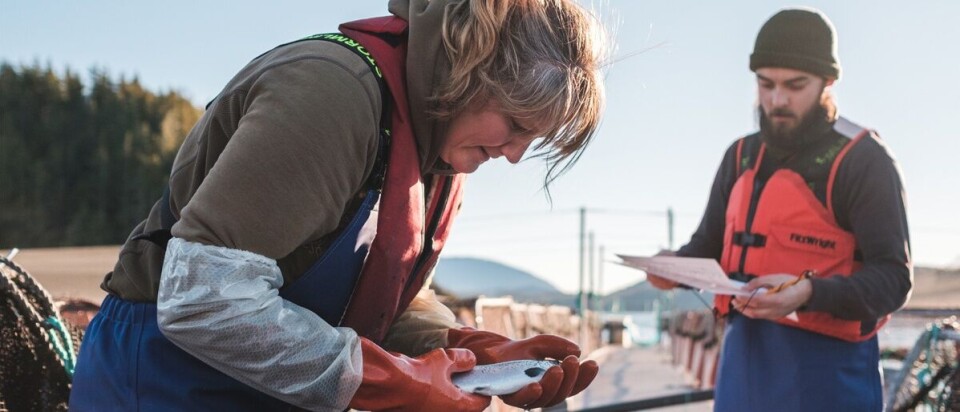
Cermaq battles lice levels in Canada
Salmon farmer Cermaq has reported higher-than-usual sea lice levels at a number of sites in Clayoquot Sound, British Columbia, resulting in sea lice treatment in feed rising to 0.3 grams of active ingredient in feed per tonne of live weight equivalent harvested, compared to 0.2 grams in the same period last year.
In its quarterly sustainability report for April to June 2018, Cermaq said treatment with hydrogen peroxide had also been used and was working effectively.
Average levels of adult and female mobile lice reached 6.6 in the quarter, compared to 0.8 in the same period last year.
The rolling 12-month fish survival rate decreased compared with the same period last year, with a rolling survival rate of 90.4% (94.1% reported in Q2 2017).
The use of antibiotics by closed cycle also increased to 35 grams/tonne harvested from 22 grams/tonne in Q2 2017.
21,584 fish escaped
In Chile, Cermaq reported sea lice (Caligus) down from 1.7 in Q2 2017 to 1.0. The survival rate for Atlantic salmon and rainbow trout improved in Q2 2018 compared to the same period last year, with rolling survival rate of 93.6% for Atlantic salmon and 97.8% for trout.
The survival rate for coho salmon decreased to 95.5% from 96.9% in Q2 2017.
Antibiotic use fell compared to the same quarter last year, with a use of 482 grams active ingredient used per tonne harvested compared with 502 grams per tonne during Q2 2017. The main reasons for antibiotic use were control of Piscirickettsiosis (SRS), for which there is not yet an effective vaccine, and furunculosis.
Cermaq Chile had one fish escape where 21,584 fish escaped due to a predator attack. In the same period last year Cermaq lost 47,524 fish and a total of 212,562 escaped throughout 2017.
Good conditions
Cermaq Norway reported sea lice counts and sea lice bath treatments were very low in Q2 2018, as in the second quarter of 2017. It said the majority of farms have very good sanitary conditions and overall lice counts are maintained well below the regulatory limit of 0.5 average adult female lice per fish.
The rolling fish survival rate decreased to 93.4% compared with 95.6% in Q2 2017. There was no use of antibiotics by closed cycle by Cermaq Norway.























































